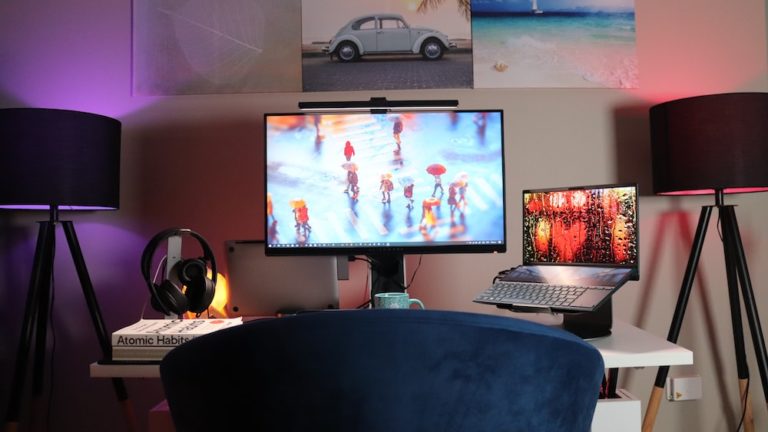Mastering Active Listening For Students: The Key To Empathy And Success
Welcome aboard, fellow seekers of wisdom and the wiry whiskers of knowledge! As we plunge headfirst into this unfathomable sea of learning, there’s one life-raft that we yearn for above all else – yep, you guessed it, the grand ark of active listening. Remember the last time you complained about your friend not acknowledging your new haircut, or when your family seemed deaf to your elegant solution for the container shortage problem? You’ve just crossed paths with the not-so-gentle giant, ‘lack of active listening.’
Drawing parallels between studying for exams and traditional gym workouts, active listening for students can be likened to an intellectual squat – it makes you sweat but you’re stronger seemingly overnight. Armed only with your ears and undivided attention, it’s time to reclaim your right as the very model of a modern active listener! So before we tumble down this rabbit hole of witty anecdotes and enlightening revelations, let me ask you a provocative query: are you ready to express active listening with same fierceness as Taylor Swift’s new chartbuster?
Understanding Active Listening
As we embark on this mission for unearthing the sacred art of active listening, breathe life into the topic by visualizing it as more than just a prosaic theory. Consider it an elusive phoenix fluttering in the realm of day-to-day communications. Sounds exotic, doesn’t it?
What is Active Listening?
Stepping into the arena of active listening, one is assailed by a certain buzz of excitement. To some, it may be as enthralling as watching ‘The Great British Bake Off’, evolving from a pile of ingredient metaphors into an immaculate ‘communication cake’. Active listening is about understanding the sprinkles of sentiments, digesting the dough of data, and savoring the flavor of feedback. Its essence lies in giving your undivided attention, mirroring the emotions of the speaker, and providing non-judgmental feedback.
In stark contrast to the try-hard listening we typically do, the process of active listening is akin to a ballet dance – every step intentional, every move contributing to a synchronicity that leaves the audience (or our conversational partner) enraptured. The listener feeds off the speaker’s energy, their thoughts nurturing rich dialogue, enhancing connection, and thus practicing the art of existence in other’s stories.
It’s about more than just letting words pour into your ears. Active listening paves a pathway for the words to journey into the core of your consciousness. Can you honestly say that you’ve given anyone that level of attention lately?

Active listening is about understanding the sprinkles of sentiments, digesting the dough of data, and savoring the flavor of feedback.
Active Listening Versus Passive Listening
Drawing lines in the sand between active and passive listening is much like juxtaposing a meticulous chef to a disinterested cat halfway across the counter. Active listening is the chef, laboring with love, precision, and intensity over each detail – an amino acid in the steak, a drop of olive oil dribbling down a pan, the effervescent pop of a champagne cork. Each word, every hidden implication unfolds under the discerning gaze of an active listener, divulging layers of meaning that passive listening might miss.
To further expound on the dichotomy between the two, passive listening is comparable to a lackadaisical swipe on a dating app – surface-level interaction devoid of real connection. It’s more of an unintentional activity that requires minimal effort. Unlike active listening, there is no actual processing, responding or understanding. As we now know, active listening is the complete antithesis, stepping up to concoct a cocktail of empathy, understanding, and mutual respect.
The Importance of Active Listening for Students
Zooming into the mystifying maze of academia, one cannot understate the significance of active listening for students. With ever-fluctuating dynamics between class lessons, personal growth, and family involvement, it’s the panacea for navigating these winding paths.
How Active Listening Can Help in School
The school can often feel like a battleground, with formulas as weaponry and textbooks as shields. Amidst these intellectual skirmishes, active listening swoops in like a secret superpower, helping students decode complex mysteries and enhance their understanding.
In the classroom, it casts spells that transform monotonous lectures into magical narratives and breathes life into the necromancy of numbers, scientific statements, and historical happenings. Active listening for students can enlighten the mind, foster deeper relationships, and lead to academic success.
The Relationship Between Active Listening and Empathy
When you think about empathy, think of it as a fabulous jam session where emotions sync up, and hearts resonate. Integral to this harmonious melody, active listening plays the role of the lead guitarist. It sets the tone, initiates the flow, and enables a deep level of understanding.
Plunging a layer deeper, active listening transports us into the speaker’s shoes, allowing us to explore the labyrinth of their thoughts, feelings, and perspectives. An empathetic listener can perceive beneath the speaker’s words and comprehend their unspoken sentiments.
Imagine if Neville Longbottom had been an active listener – he’d have understood Harry’s plight a lot sooner, and who knows, maybe he’d have joined the trio much earlier in their quest!
Outcomes and Benefits of Active Listening
Let’s slap on our intellectual lenses and dive into the significantly rewarding arena of active listening outcomes and benefits. Prepare to be wowed!
Improved Communication Skills
Active listening for students forms the backbone of effective communication. And frankly, who among us hasn’t fallen prey to miscommunication at one point or another? Remember that time when you and your group misunderstood the assignment and ended up recreating the Laughing Cow logo in glitter art instead of writing an essay on the ‘Economics of Dairy Farming’. Not the brightest moment!
Active listening goes beyond hearing and involves fully comprehending, responding to, and remembering what is being said. Just like a seasoned detective meticulously gathering clues, an active listener is always on the alert for non-verbal cues and underlying messages. This skill, once mastered, enormously improves communication, minimizing room for assumptions or misinterpretations. Bye-bye, unexpected dairy-art emergencies!
Active listening goes beyond hearing and involves fully comprehending, responding to, and remembering what is being said.
Increased Academic Understanding
Imagine active listening as a mental sieve, a sophisticated sieve that can separate the wheat from the chaff, empowering students to focus on critical information and filter out the fluff. If all students were expert sievers (yes, I’m baptizing us ‘sieveologists’), the school would be a far more productive place.
Active listening helps students to better understand instructions and discussions in class. It’s the secret sauce that breathes life into complex subjects, making the seemingly incomprehensible, digestible. It’s like turning on the light in a formerly dim room, enabling you to see the tricky Lego pieces lurking in the corners.
Benefits to Teachers
Teachers, the unsung heroes of our society, can benefit profoundly from championing active listening for students. By encouraging active listening, teachers can minimize the likelihood of miscommunication and consequent errors, reducing the need for repetitious explanations. It’s like giving teachers an extra set of hands, alleviating the hefty workload.
Active listening also supports improved classroom management. When students actively listen, there’s less talking over the teacher, fewer distractions, and more respect for others’ speaking time. Suddenly, the buzzing beehive transforms into a harmonious symphony orchestra.
Moreover, active listening also encourages a sense of empathy and understanding among students. This change in classroom dynamics positively impacts the teachers too. With a more empathetic and understanding student body, the overall investment in managing student relationships reduces. It’s the proverbial win-win for both students and school staff!
Strategies to Enhance Active Listening Skills
If you thought active listening for students was a mystic art, fear not, dear reader. With the right strategies in place, it’s as attainable as the cookie jar on the higher shelf, if not more! So, let’s put on our metaphorical climbing gloves and see how we can grab that delicious cookie of active listening.
Strategies for Students
The journey of becoming an active listener begins with the willingness to learn and improve. As students, you could start by consciously paying attention to the speaker, not just the spoken. It’s about training your mind to be present, focused, and curious, just like a cat at the sight of a laser pointer.
Additionally, practicing patience can significantly aid your active listening skills. Remember those old dial-up internet connections? Imagine communicating that way. You’d probably hear half a sentence today and the next half next week. Frustrating, right? Well, speedy and efficient communication requires patience, especially when you are tempted to interrupt or make assumptions.
Body language plays a central role in communication. Therefore, expressing your interest through non-verbal signals such as maintaining eye contact, leaning forward, and nodding can enhance the overall communication experience. It’s your way of telling the speaker, louder than words, ‘I’m here, I’m listening, I’m engaged.’
The journey of becoming an active listener begins with the willingness to learn and improve.
Strategies for Teachers
Teachers possess an unparalleled power to shape students’ mindset and habits. Implementing active listening for students can start right from the staff room, where school administrators can lead by example, fostering a culture of active listening among teachers.
To begin with, teachers can create a conducive learning environment that encourages open and respectful communication. This ‘listening-friendly’ environment can be nurtured by establishing classroom norms around speaking and listening – for example, a ‘one speaker at a time’ policy.
Moreover, incorporating active listening exercises in the curriculum, like making pairs or groups discuss a topic, can provide hands-on practice for the students. It’s like learning to swim. Prior to taking the plunge, it’s important to familiarize with the nuances of the skill and understand the do’s and don’ts. Similarly, before students are thrown into real-life debates and discussions, they need an arena to practice, make mistakes, learn, and improve.
Practical Steps to Active Listening
Unlocking the power of active listening needn’t be as arduous a task as solving a Rubik’s cube blindfolded. With the right approach and a few practical steps, we can all evolve from being ‘passive hearers’ to ‘active listeners’.
7 Steps to Active Listening
- Initiate your active listening process by eliminating distractions. Turn off your devices, close deterring tabs on your browser, and if your surroundings permit, find a quiet space. This is step one in your journey to becoming an effective listener.
- Establish eye contact with the speaker. It’s your non-verbal handshake, affirming your presence and interest.
- Pay attention to non-verbal cues, like facial expressions, body language, or even the silence between words. Like a skilled archaeologist, an active listener digs beyond the obvious to discover deeper meanings.
- Resist the temptation to interrupt or overshadow the speaker. Remember, it’s not a race to the finish line, but a scenic drive meant to facilitate mutual understanding.
- Show empathy and understanding through reflective listening, echoing the speaker’s words and sentiments to demonstrate comprehension.
- Take notes, if necessary, to remember crucial details.
- Finally, provide non-verbal feedback such as nodding, and verbal feedback like clarifications, summarizations, or relevant questions.
By following these seven steps, students can champion active listening, benefiting their personal growth, academic performance, and their role in fostering healthy classroom dynamics. Not just that, school administrators and staff would also appreciate the implicit support to effective teaching and harmonious learning environment. Active listening skills, therefore, hold the key to a virtuous cycle of growth, understanding, and success.
The Role of Body Language in Active Listening
You might think active listening is all about our ears, right? Oh, how wrong we are, my friends! As any skilled ninja of communication knows, it’s not just about what you hear, but what you see. Our physical postures and gestures contribute tremendously to effective communication. Imagine you are at a conference, fully immersed in a powerful presentation. You’d observe the speaker nodding, maintaining eye contact, and reacting relevantly to the audience’s responses. Now, that’s the power of body language!
Picture this. A person is telling you their story, but you’re slouched over, arms crossed and eyes wandering around the room. You’re technically listening, but you’re not actively listening. Now contrast this with a situation where you maintain eye contact, lean slightly forward, and mirror their expressions in response to their sharing. That, my dear humans, is the subtle power of body language in active listening. You’re not just hearing; you’re showing that you genuinely care about their narrative.
Effective body language in active listening includes maintaining eye contact, mirroring the speaker’s expressions, and displaying open body language: no crossed arms, for instance. Here’s a fun fact: Studies reveal that about 55% of our communication comes from body language. That shows how crucial it is in active listening, particularly in scenarios like one-on-one interactions or conference presentations. So next time, don’t just sharpen your ears; remember to tune up your body language too!
FAQs
1. What is the difference between active and passive listening?
The difference between active and passive listening lies mainly in the level of engagement. In active listening, you are actively participating in the conversation by offering reflective responses, asking clarifying questions, and demonstrating empathy towards the speaker. This process enhances both comprehension and relationship building.
2. How can active listening improve academic performance?
Active listening improves academic performance by enhancing comprehension. Students who actively listen can understand complex concepts more effectively, as the process encourages reflection, prompts mental rehearsal, and stimulates critical thinking.

3. What are some practical steps to improve active listening skills?
Improving active listening skills can benefit from practical steps like mindfully controlling distractions, ensuring active engagement through responses, or even practicing body language that communicates interest and empathy. It’s all about transforming the listening experience into an active conversation.
4. How can teachers promote active listening in the classroom?
Teachers, your role in promoting active listening is critical. You can foster it through various strategies such as creating a receptive learning environment, modelling active listening behaviors yourself, and incorporating active listening exercises into your teaching methods.
Conclusion
The art of active listening for students is a game-changer. It’s a skill that ensures effective communication and fosters empathy – qualities that are essential to being not just a successful student, but a compassionate human.
But remember, Rome wasn’t built in a day, and neither are your active listening skills. It requires a commitment to practice, along with a willingness to engage genuinely and wholeheartedly with the person speaking. Whether you’re a teacher setting the tone for your classroom or a student striving to excel, enhancing your active listening skills can be a transformative step in your journey of growth.
As we draw this conversation to a close, let’s reflect on the vital role that active listening plays, not only in academic success but also in shaping us into empathetic individuals. As students, let’s all strive to develop this superpower; and as teachers, let’s foster it in our classrooms, molding a future generation of active listeners.
Signing off, Your compatriot in self-transformation, Fabian.
Share with your Friends:






